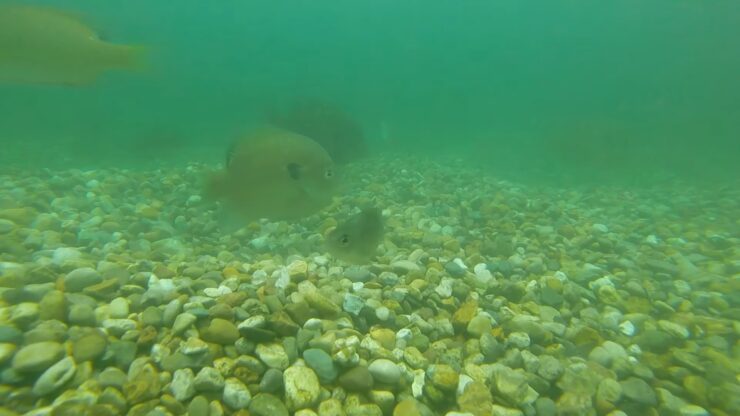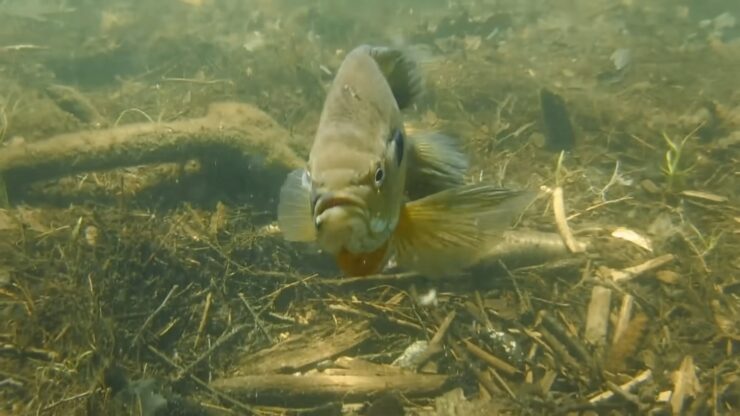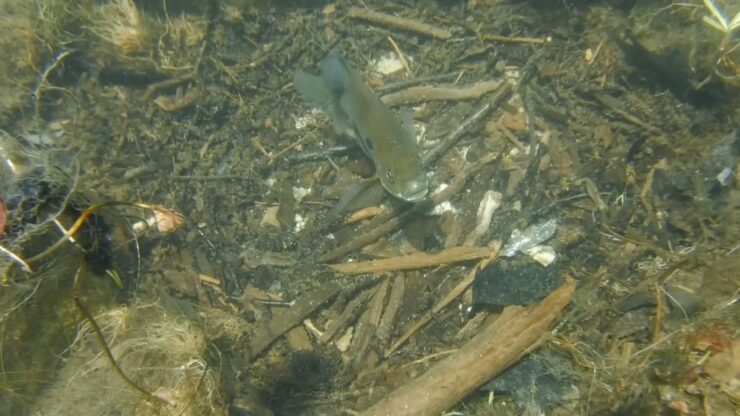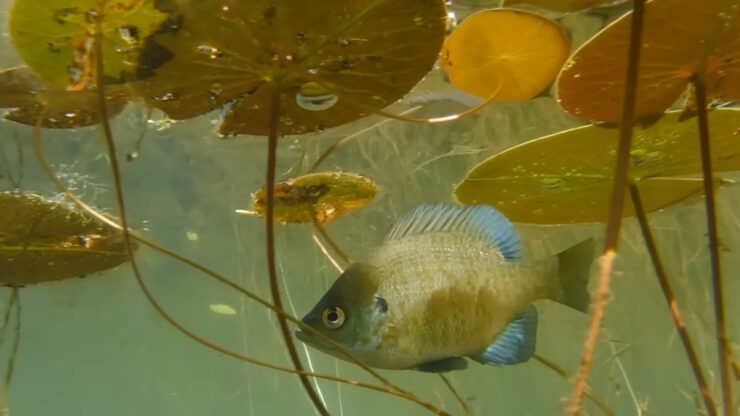Bluegill (Lepomis macrochirus) is also known as bream, brim, or sunfish. Bluegill Range from the Rio Grand to Minnesota to Florida and everywhere in between. Bluegill can be identified by the bluegill flap. Bluegill grows to a maximum size of nearly 5 pounds. Bluegills prefer pools in streams, lakes, and ponds.
Bluegill is one of the most sought-after gamefish in the U.S.A.! Bluegills can be caugth year-round in Louisiana but by far the most productive time is in the spring when the first spawns occur. Bluegill are a schooling fish and sometimes you can limit out without lifting the anchor as you catch them on the spawning grounds.
Bluegills owe their popularity to the fact that they are common, bite readily, and are easily caught in small ponds by landbound youngsters. Common baits used to catch Bluegill are worms, crickets, artificial flies, and small jigs.
Habitat and Distribution

They settle in places like lakes and ponds, as well as slow-walking rivers and creeks. These polite fish were born in North America but have since ventured out, kindly greeting new neighbors in other lands who appreciate their pleasant company.
From California’s shores to the east coast seas, excluding only Alaska’s far reaches, you might spot these travellers’ smiling faces. Their welcoming nature lets them make any waters their own.
Physical Characteristics
Bluegills have a deep, oval frame, distinct from other pond dwellers. Their mouths are small yet mighty, well-suited for nibbling insects, tiny invertebrates, and plant snacks. Above, their skin shows an earthy olive hue, lightening to a sunny yellow below. On their cheeks and gill flaps glows a lovely azure that lends them their name.
Most measure six to nine inches long in their daily swim. Light as a feather at less than half a pound too. But in just the right home, the largest lace up to a foot and more. These traits make bluegills easy to pick out from the crowd, beloved by fishers young and bold.
Read More: Fish Facts: Rosy Reds
Breeding Habits

Bluegills are devoted parents, eager to multiply come springtime’s call. Daddy fish shapes shallow scoops in sand or stones, his nurseries for a new life, big with love for all. Into his circular courts, the ladies release their eggs in clusters, trusting him to keep them safe till they emerge. With passion and vigilance, against each threat, he surges, so his babies may swim free when hatching days emerge.
Though thousands may be born of just one mother’s lay, each tiny being matters the world to him, come what may. His care sustains the newlings till they’re ready to explore – the circle of bluegill fatherhood, nurturing more and more.
Diet and Feeding
With their petite pouts, these blue beauties have learned to be hardy eaters however they’re able. Their menus vary, with whatever nature offers – tiny wigglers on land or sea, bugs on the wing, or swimming free.
Come warm sunny spells, they dine most on insects’ broods, helping control creeping crowds. Small crustaceans on the half shell also fill these gills just as well. Their nibbling nourishes nature’s nurses, sustaining numbers their nurturing ensures. By gobbling more than their fill, the balance they help keep fills bodies and wills.
Read Also: Fish Facts: Yellowhead Wrasse
Importance in Ecosystems

As hunters and as prey, their role’s exchange serves well both more and less, like cog in lively gears. They offer flesh and feathered folk their succor in kind, making streams and shores lively with a bounty to find.
Their bug-munching too makes plants and forests all the merrier, as harmony’s choir they sweetly carry. And where kind anglers fish for leisure and cheery pastime, still they spread the benefits beyond the end of the line. For lurking bass and other well-fed game, fishers own their thanks just the same.
Challenges and Conservation
When people destroy habitats by polluting streams and dredging ponds or catch too many in their nets and lines, this harms the balance of bluegill numbers. Keeping healthy populations means thoughtful planning.
Groups work hard in caring for these cheerful fish. They make rules for fishing seasons and limits to leave some bluegills for spawning. Clearing waters of garbage and watching for chemicals helps the streams stay clear. Restoring wetland plants and gravel bottoms allows the bluegills to lay eggs and find food as they always have.
Read Also: Fish Facts: Blackfin Tuna
Adaptability and Resilience
Bluegills demonstrate remarkable versatility in the environments they can inhabit. They have proven able to thrive whether in clear lakes or murkier ponds. This characteristic has surely contributed to their success spreading far.
These hardy fish also tolerate a wide range of temperatures and oxygen levels. When conditions change, bluegills adapt well. This trait proves crucial to their survival over time. Where others struggle with disruption, bluegills adjust and flourish still.
Last Words
In closing, bluegills have clearly proven themselves to be a remarkable fish. Their ability to adapt to different environments and tolerances has allowed them to thrive in many lakes, ponds and streams. Their prolific breeding and place as both predator and prey in food webs make them important players in ecosystems.

